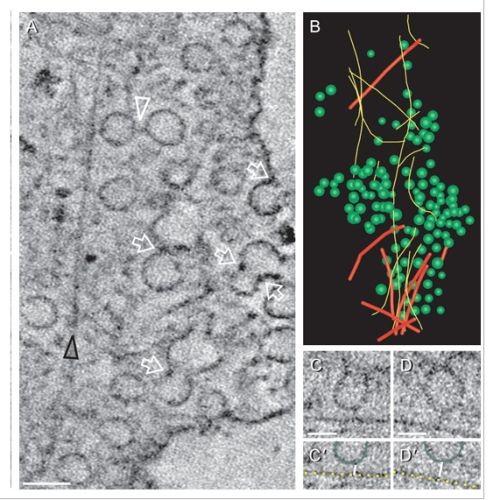High-resolution 3D quantitative analysis of caveolar ultrastructure and caveola-cytoskeleton interactions.
Caveolae are characteristic invaginations of the mammalian plasma membrane (PM) implicated in lipid regulation, signal transduction and endocytosis. We have employed electron microscope tomography (ET) to quantify caveolae structure-function relationships in three-dimension (3D) at high resolution both in conventionally fixed and in fast-frozen/freeze-substituted (intact) cells as well as immunolabelled PM lawns. Our findings provide a detailed quantitative comparison of the average caveola dimensions for different cell types including tissue endothelial cells and cultured 3T3-L1 adipocytes. These studies revealed the presence of a spiked caveolar coat and a wide caveolar neck open to the extracellular milieu that is sensitive to conventional fixation; the neck region appeared to form a specialized microdomain with associated cytoplasmic material. In endothelial cells in situ in pancreatic islets of Langerhans, the diaphragm spanning the caveolar opening was clearly resolved by ET, and the involuted 3D topology of the cell surface mapped to measure the contribution of caveolar membranes to local increases in the surface area of the PM. The complexity of connections among caveolae and to the actin cytoskeleton and microtubules suggests that individual caveolae may be interconnected through a complex filamentous network to form a single functional unit.

- Traffic 2008 Jun 07;9(6):893-909
- 2008
- Cell Biology
- 18397183
- PubMed
Enabled by:
